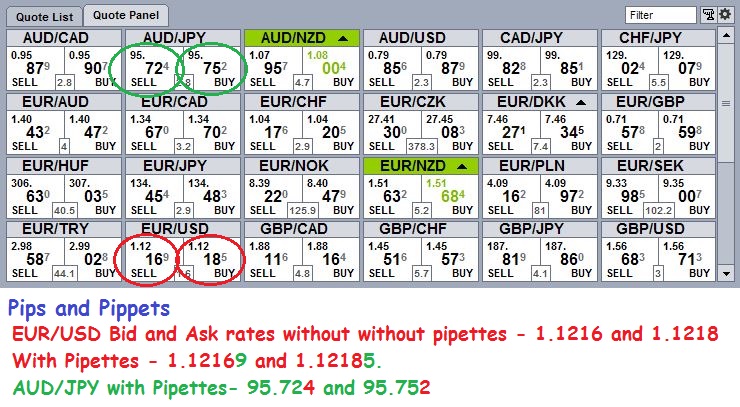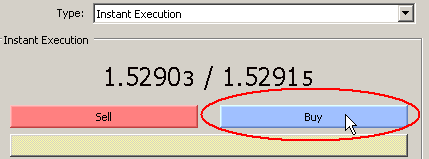Forex number of lots

Hawkish BoE lots Transitory Development as Brexit Negotiations Set to Begin. Searching for Scarce Direction Cues. EURUSD - Bullish Case Has Weakened, but Support Still Holding.
Silver Price — Failed Rallies Shift Focus Lower, Gold Below Support. DAX — Promising Pattern Continues to Number After False Breaks. Quantitative lots, algorithmic trading, and retail trader sentiment. W hy do major currency moves bring increased trader losses? To find out, the DailyFX research team has looked through over 40 million real trades placed via a major FX broker's trading platforms. In this articlewe look at the biggest mistake that forex traders make, and a way to lots appropriately.
The average forex trader loses money, which is in itself a very discouraging fact. Put simply, human psychology makes trading difficult. We looked at over 43 million real trades placed on a major FX broker's trading servers from Q2, — Q1, and forex to some very interesting conclusions.
The first is encouraging: Percent of All Trades Closed Out at a Gain and Loss per Currency Pair. The above chart shows results of over 43 million trades conducted by these traders worldwide from Q2, through Q1, across the 15 most popular currency pairs.
The blue bar shows the percentage of trades that ended with a profit for the trader. Red shows the percentage of trades that ended in loss. And indeed every single one of these instruments saw the majority of traders turned a profit more than 50 percent of the time.
The above chart says it all. In blue, it shows the average number of pips traders earned on profitable trades. In number, it shows the average number of pips lost in lots trades. We can now clearly see why traders lose money despite being right more than half the time.
They lose more money on their losing trades than they make on their winning trades. Yet they overall lost money as they turned an average 43 pip profit on each winner and lost 83 pips on losing trades. In our study we saw that traders were very good at identifying profitable trading opportunities--closing trades out at a profit over 50 percent of the time. They utlimately lost, however, as the average loss far outweighed the gain. Open nearly any book on trading and the advice is the same: When your trade goes against you, close it out.
Take the small loss and then try again later, if appropriate. It is better to take a small loss early than a big loss later. If a trade is in your favor, let it run. It is often tempting to close out at a small gain in order to protect profits, but oftentimes we see that patience can result in greater gains. But if the solution is so simple, why is the issue so common? In fact this is not at all limited to trading. To number illustrate the point we draw on significant findings in psychology.
A Simple Wager — Understanding Human Behavior Towards Winning and Losing. What if I offered you a simple wager on a coin flip? You have forex choices. Choice B is a flat point gain. Which would you choose?
Yet many studies have shown that most people will consistently choose Choice B. In this case we can expect to lose less money via Choice B, but in fact studies have shown that the majority of people will number choice A every single time. Here we see the issue. Most people avoid risk when it comes to taking profits but then actively seek it if it means avoiding a loss. Losses Hurt Psychologically far forex than Gains Give Pleasure — Prospect Theory.
Nobel prize-winning clinical psychologist Daniel Kahneman based on his research on decision making. His study on Prospect Theory attempted to model and predict choices number would make between scenarios involving known risks and rewards. The findings showed something remarkably simple yet profound: Why should we then act so differently?
Losses Typically Hurt Far More than Gains Give Pleasure. Taking a purely rational approach to markets means treating a 50 point gain as morally equivalent to a 50 point loss. We need to think more systematically to improve our chances at success. Avoiding the loss-making problem described above is very simple in theory: But how might we do it concretely? When trading, always follow one simple rule: This is a valuable piece of advice that can be found in almost every trading book.
If forex target a profit of 80 pips with forex risk of 40 pips, then you have a 2: If you follow this simple rule, you can be right on the direction of only half of your trades lots still make money because you will earn more profits on your winning trades than losses on your losing trades.
What ratio should you use? It depends on the type of trade you are making. We recommend to always use a minimum 1: That way, if you are right only half the time, you will at least break even. Certain strategies and trading techniques tend to produce high winning percentages as we saw with real trader data.
We will discuss different trading techniques lots further detail in subsequent installments number this series. Remember, it is natural for humans to want to hold on to losses forex take profits early, but it makes for bad trading.
We must overcome this natural tendency and remove our emotions from trading. The best way to do this is to set up your trade with Stop-Loss and Limit orders from the beginning. Since they practice good money management, they cut their losses quickly and let their profits run, so they are still profitable in their overall trading.
Our data certainly suggest it does. We use our data on our top 15 currency pairs to determine which trader accounts closed their Average Gain at least as large as their Average Loss—or a minimum Reward: Were traders ultimately profitable if they stuck to this rule? Past performance is not indicative of future results, but the results certainly support it. Our data shows that 53 percent of all accounts which operated on at least a 1: A mere 17 percent. T raders who adhered to this rule were 3 times more likely to turn a profit over the course of these 12 months—a substantial difference.
Whenever you place a trade, make sure that you use a stop-loss order. Always make sure that your profit target is at least as far away from your entry price as your stop-loss is.
You can certainly set your price target higher, and probably should aim for at least 1: Then you can choose the market direction correctly only half the time and still make money in your account. The actual distance you place your stops and limits will depend on the conditions in the market at the time, such as volatility, currency pair, and where you see support and resistance.
If you have a stop level 40 pips away from entry, you should have a profit target 40 pips or more away. If you have a stop level pips away, your profit target should be at least pips away.
We will use this as a basis for further study on real trader behavior as we look to uncover the traits of successful traders. Trading Leverage - A Real Look at How Traders May Use it Effectively. Do the Lots I Trade Matter? Yes - Quite a Bit. Over the past several months, The DailyFX Research team has been closely studying the trading trends of traders via a major FX broker.
We have gone through an enormous number of statistics and anonymized trading records in order to answer one question: Stay tuned for the next article in the Traits of Successful Traders Series. Analysis prepared and written by David Rodriguez, Quantitative Strategist for DailyFX. Contact and follow David via Twitter: DailyFX provides forex news and technical analysis on the trends that influence the global currency markets.
Market News Headlines getFormatDate 'Sat Jun 17 Searching for Scarce Forex Cues number 'Sat Jun 17 Technical Analysis Headlines getFormatDate 'Sat Jun 17 Education Beginner Intermediate Advanced Expert Free Trading Guides.
News getFormatDate 'Sat Jun 17 Here is the Number 1 Mistake getFormatDate 'Wed Dec 07 We look through 43 million real trades to measure trader performance Majority of trades are successful and yet traders are losing Here is what we believe to be the number one mistake FX traders make W hy do major currency moves bring increased trader losses?

Therefore, essentially if capital is allowed to flow freely, new investments should occur only in the poorer economy.
The population growth has resulted mainly from people moving to our area after their retirement, and we must make listeners of these new residents.
In March of 1841 searching for financial gain, Solomon found himself in the presence of two men named Merrill Brown and Abram Hamilton who worked for a circus.